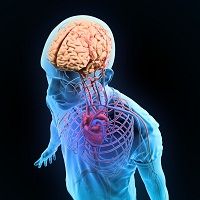Article
Diminishing Fibromyalgia Pain One Breath at a Time
Author(s):
While assessing treatment options for patients with post-traumatic brain injuries, a collaborative team of researchers discovered that oxygen chamber treatment may also benefit patients with fibromyalgia.

While exploring a way to help patients with post-traumatic brain injuries, a collaborative team of researchers discovered that oxygen chamber treatment proved to benefit those with fibromyalgia as well.
Although the cause of fibromyalgia has yet to be pinpointed, researchers have linked the condition to alterations in brain activity for quite some time. With more than 90% of fibromyalgia diagnoses going to women, researchers from Rice University and other institutions may have found a way to ease the pain by going directly to the suspected source via hyperbaric oxygen treatment (HBOT).
“The abnormalities in brain regions responsible for the chronic pain sensation in fibromyalgia patients can be triggered by different events,” one of the lead authors, Shai Efrati, MD, said in a news release.
The clinical trial included 48 women — ages 21 to 67 – who were diagnosed with fibromyalgia at least 2 years prior. Half of the participants received 100% oxygen at 2ATA during the 90-minute HBOT treatment 5 days per week for 2 months (totaling in at 40 treatments), while the other half remained in the control group. Those in the treated group underwent evaluation at baseline and after HBOT while those untreated had an additional examination after a control period of no treatment. At each of these points they had physical examinations (noting tender point count and pain threshold), single photon emission computed tomography (SPECT), and the researchers looked at the quality of life.
According to the results published in PLOS ONE, improvements were witnessed in the treated group across the board. Not only did they have a better quality life following the HBOT treatment, but the SPECT imaging revealed less hyperactivity in the posterior region and frontal areas. However, none of these improvements were seen in the controlled group.
“The results are of significant importance since, unlike the current treatments offered for fibromyalgia patients, HBOT is not aiming for just symptomatic improvement,” Efrati explained. “HBOT is aiming for the actual cause — the brain pathology responsible for the syndrome.”
This ‘invisible illness’ has been hotly debated within the medical community, as well as among the public. Another lead author, Eshel Ben-Jacob, PhD, explained that he along with other physicians that he knows noticed a trend involving skepticism in disorders that are mainly diagnosed in women.
“Most people have never heard of fibromyalgia,” Ben-Jacob said. “And many who have, including some medical doctors, don’t admit that this is a real disorder.”
Even though this may be the first time that HBOT has shown to decrease brain pain activity, the authors conclude that this form of treatment should be used on patients with fibromyalgia now instead of waiting for more research.





